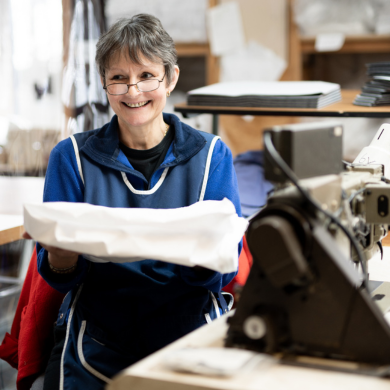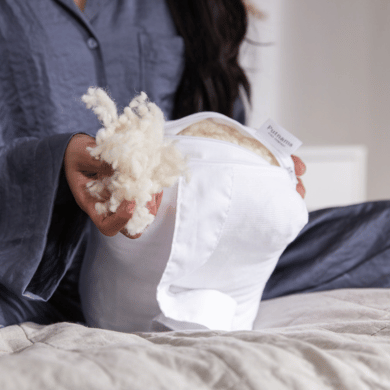
Cushions for Wheelchair Users: Choosing the Right Fit
Finding the perfect cushion for your wheelchair is not just about comfort - it's essential for health, posture, and overall quality of life. Whether you're a wheelchair user, a caregiver, or a healthcare professional, understanding the benefits of different wheelchair cushions can make a big difference in daily living.
This guide will take you through the different types of pillows and cushions available, key factors to consider, and tips for making the right choice to enhance both comfort and functionality.
It is estimated that there are over 1.2 million wheelchair users in the UK currently. With increasing life expectancy this number is only set to get bigger. Therefore it is important that we look to accommodate each individual user with a chair that is fit for purpose and comfortable.
Why Choosing the Right Cushion Matters
Wheelchair cushions aren't a one-size-fits-all solution.
The right cushion can prevent pressure ulcers, improve posture, and make daily activities more comfortable. A poorly chosen wheelchair cushion, however, can lead to discomfort, increased health risks, and even reduced wheelchair stability.
It's about more than just sitting - it's about sitting well. Why should comfort be a premium when it can be standard.
Types of Wheelchair Cushions
Understanding the types of wheelchair cushions is the first step in making an informed choice. Each type offers unique benefits depending on your personal needs.
1. Foam Cushions
Foam cushions are lightweight, affordable, and provide decent stability. They’re especially good for users who need basic support. However, foam tends to lose its shape over time, which can reduce its effectiveness.
Pros:
- Lightweight and easy to handle
- Good for moderate stability and posture support
- Affordable option for short-term use
Cons:
- Can compress or "bottom out" with extended use
- Limited durability
2. Memory Foam Cushions
- Contours to the user's body for personalized support
- Reduces pressure points and discomfort
- Good durability
- Can be heavy and difficult to transport
- May retain heat, making it uncomfortable in warmer weather or climates
3. Specialised Cushions
Options such as Putnams contoured wheelchair theracube cushions, the wheelchair sag cushion or coccyx cut-out cushions are tailored to specific needs, like addressing posture improvement or reducing tailbone pressure.
Who might need these?
- Contoured wheelchair cushions target posture issues like a forward slump.
- Wheelchair coccyx cushions help with tailbone relief.
- Anti-thrust cushions help prevent forward sliding.
Factors to Consider When Choosing a Wheelchair Pillow or Cushion
Not all cushions are created equal, and what works for one person may not work for another. Here are the most important factors to evaluate:
1. Body Type
Your body weight, height, and anatomy affect which cushion will work best. Some cushions, such as high-density foam or gel, are designed to handle higher weight capacities.
2. Mobility
Active users who frequently transfer in and out of their wheelchairs typically prefer lightweight cushions for ease of movement. Those who spend extended periods seated may require advanced pressure relief.
3. Posture Support
If posture is a challenge, consider cushions designed for stability, like contoured or anti-thrust designs. Improved posture doesn't just enhance comfort - it also helps avoid secondary issues such as back pain and fatigue.
4. Pressure Ulcer Prevention
Preventing pressure sores is critical for individuals with reduced sensation or limited ability to adjust sitting positions.
5. Environmental Factors
Is the user in a humid climate or prone to sweating? Some cushions, like honeycomb or gel, offer better airflow and cooling properties than foam.
The Cushion Selection Process
Choosing the right wheelchair pillows and cushions involves more than picking one off the shelf.
Here's how you can ensure the best fit:
1. Consult a Healthcare Professional
Start with a consultation from a physiotherapist, occupational therapist, or seating specialist. They can perform a detailed assessment of your posture, mobility, and pressure distribution needs.
2. Pressure Mapping
Pressure mapping is a high-tech way to evaluate how evenly pressure is distributed across a cushion. This process can highlight any areas at risk for pressure ulcers.
3. Adjust and Fine-Tune
Ensure you take time to adjust the cushion to your preferred firmness or contour. Many hybrid cushions offer customisable settings.
Always consult the professionals. Our team are just a phone call away and have decades of experience in what works best, so why not give them a call they would love o hear from you.
Maintenance and Care of Wheelchair Cushions
A cushion is an investment in your comfort and mobility, so taking care of it can extend its lifespan and maintain its benefits.
- Cleaning: Check if the cushion cover is removable and washable. For hygiene, choose incontinence-resistant covers if needed.
- Regular Inspections: Assess your cushion for wear and tear, especially with foam that can lose shape or air cushions prone to punctures.
- Replacements: Replace cushions as needed - most cushions have a lifespan of 1 to 3 years, depending on use and material quality.
Real-Life Experiences from Wheelchair Users
Ripple Wheelchair Comfort Seat Liner
The Seat has been a great success. My 97 year old mother can now remain for longer periods in her wheelchair enabling her to join in more activities in her Nursing Home. - Linda G
Theracube Cushion - Contoured Wheelchair
These testimonials reveal the significant impact the right cushion can have, transforming day-to-day experiences.
Enhancing Lives with the Right Cushion
Investing time and effort in selecting the right wheelchair cushion can make all the difference.
Whether you prioritise pressure relief, posture support, or durability, finding "the one" can transform how you move through your day.
To learn more about finding the perfect cushion, consult your healthcare provider or just give our team a call. Every detail counts when improving comfort and quality of life.

















Leave a comment